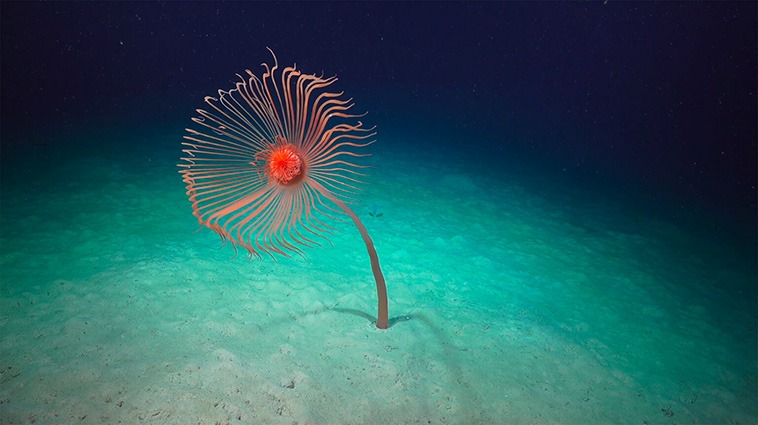ANIMALS
The Incredible 6-Year Journey of a Photographer in Capturing the Perfect Kingfisher Dive

A heartfelt journey fueled by childhood memories transformed into a determined six-year mission for Alan McFadyen. With the aim of paying tribute to his late grandfather, he tirelessly pursued the ideal photograph of a kingfisher in mid-dive.
For more than 4,200 hours and through the lens of his camera, the 46-year-old Scotsman captured an astounding 720,000 images before finally capturing the perfect moment.
Vivid memories of observing kingfishers alongside his grandfather, Robert Murray, at a picturesque lake near Kirkcudbright, Scotland, remained deeply imprinted in McFadyen’s mind.
Four decades later, these cherished memories ignited a passion within him, transforming a childhood hobby into a dedicated pursuit of photographing this extraordinary bird.
The flawless moment: Mr. McFadyen dedicated six years of his life and took a staggering 720,000 photos before successfully capturing the kingfisher’s perfect dive.
 Image source: Alan McFadyen
Image source: Alan McFadyen
Every year, the kingfisher’s nest would get flooded by the rising tides. To solve this problem, McFadyen created a safe and sustainable home for the birds by carving a hole in the riverbank and filling it with clay.
In his quest, McFadyen, a father of three, made frequent visits, dedicating around 100 days each year to patiently wait at the lakeside location, hoping to capture the kingfishers’ iconic dive.
With over 720,000 photos taken and countless hours of unwavering commitment, he was able to immortalize the bird’s flawless dive, capturing the moment with no trace of a splash.
Before successfully capturing the perfect shot, Mr. McFadyen spent a total of 4,200 hours at Kirkcudbright in Scotland, tirelessly working towards his goal.
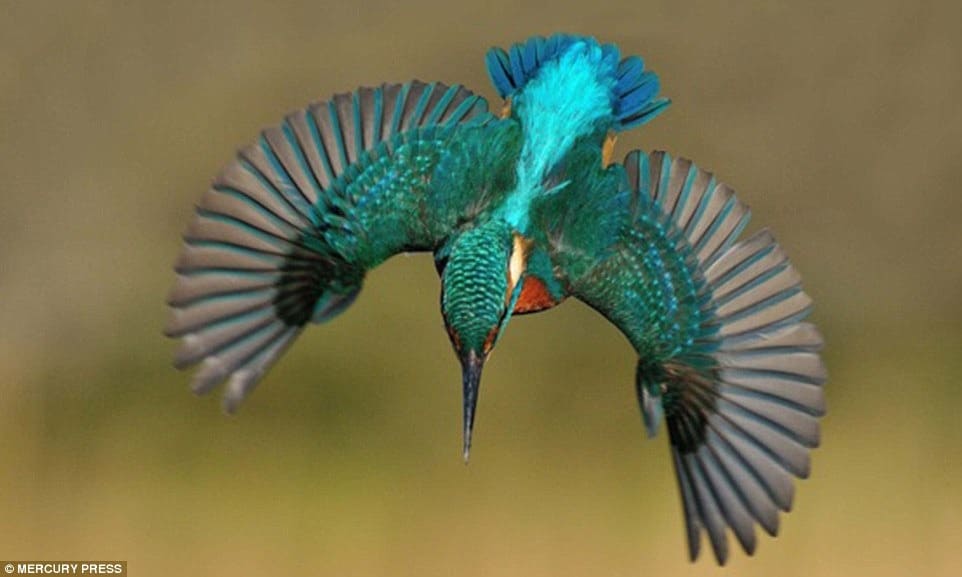 Image source: Alan McFadyen
Image source: Alan McFadyen
From his home in the Dumfries and Galloway region of Scotland, McFadyen looked back on his incredible achievement, saying, “Capturing such a shot takes a considerable amount of patience and a healthy dose of luck.
The kingfishers dive at bullet speed, making capturing a good photo a significant challenge. I often snapped hundreds of photos in one session. While most of them didn’t meet my expectations, they represented steps toward my goal.”
Sadly, McFadyen’s grandfather Robert passed away in 1994, never getting to see his grandson’s success in photographing the beloved bird they both cherished.
The instance when the kingfisher plunged into the water silently, without creating any ripples.
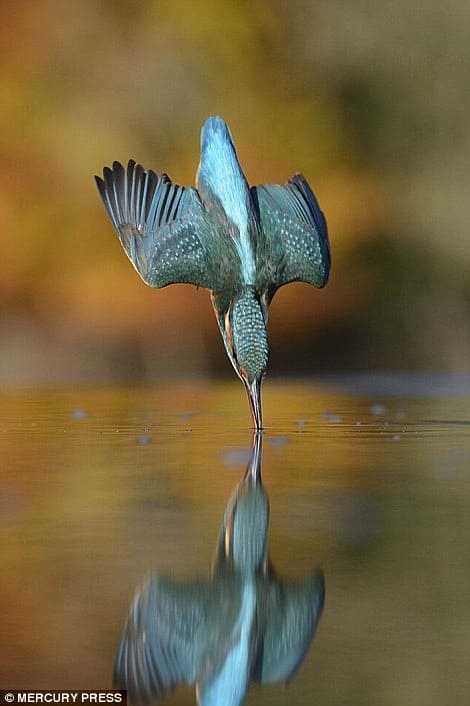 Image source: Alan McFadyen
Image source: Alan McFadyen
The dad with three kids visited the lake several times each week, spending around 100 days every year, to take pictures of the kingfishers as they gracefully dived into the water.
 Image source: Alan McFadyen
Image source: Alan McFadyen
Every year, the kingfisher’s nests would get flooded with water. To solve this problem, Mr. McFadyen created a nest for them by digging a hole in the riverbank and filling it with clay.
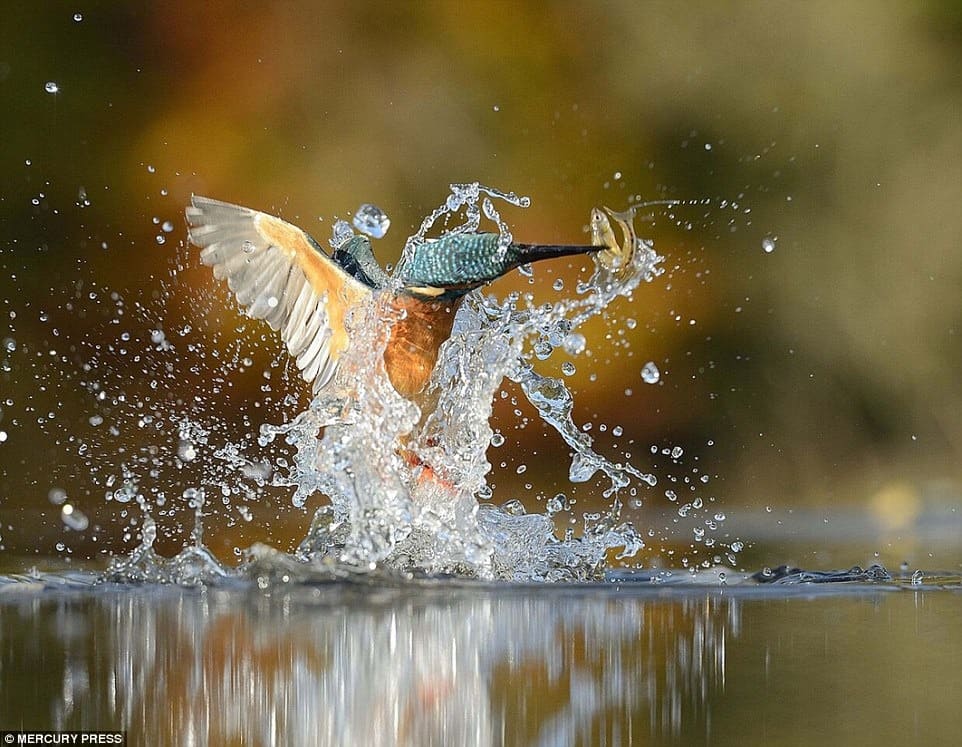 Image source: Alan McFadyen
Image source: Alan McFadyen
McFadyen shared his deep desire for his grandfather to witness his achievements, noting that his grandfather’s impact on his life was significant, and his approval would have meant everything to him.
Moving forward, McFadyen intends to carry on his exploration with the kingfishers, finding comfort and happiness in this unique lakeside location.
His ultimate aspiration is for his eight-year-old son, Leighton, who recently spotted his first kingfisher, to carry forward his legacy.
The photographer thinks that the ideal kingfisher he captured in his photograph was a fully grown female, aged approximately two or three years.
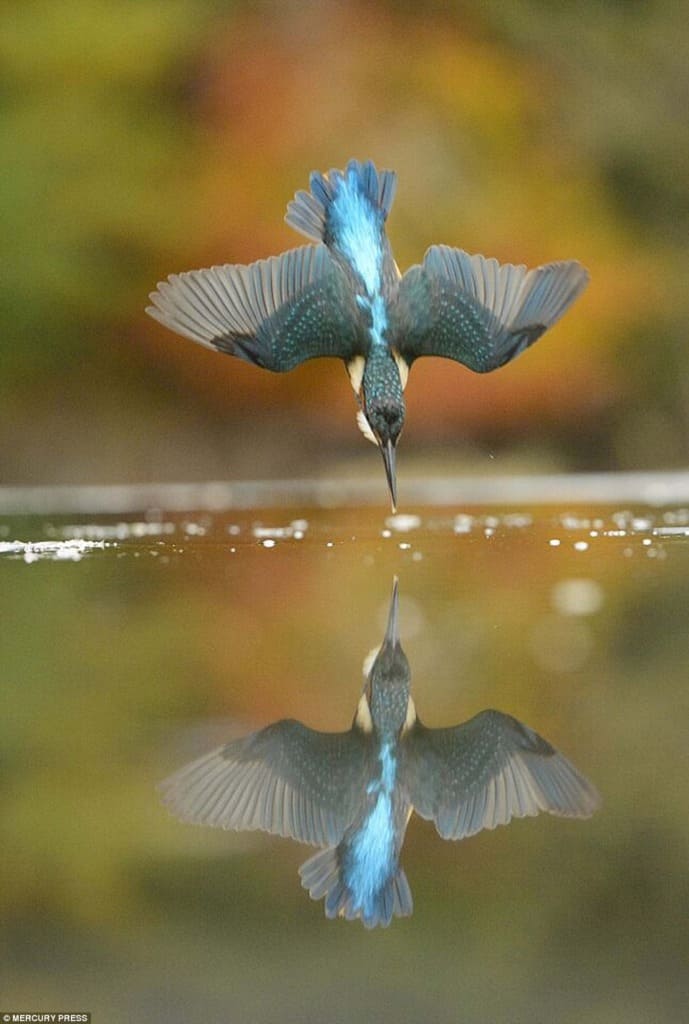 Image source: Alan McFadyen
Image source: Alan McFadyen
His passion for kingfishers developed when his grandfather, Robert Murray, took him to Kirkcudbright as a young boy, 40 years ago.
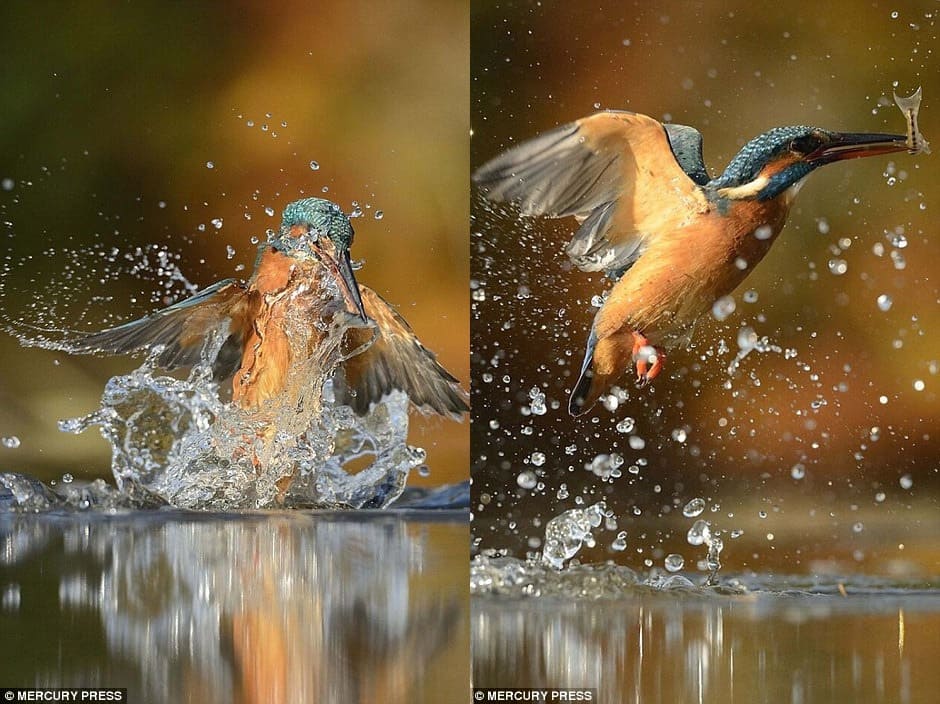 Image source: Alan McFadyen
Image source: Alan McFadyen
Mr. McFadyen would visit the location twice a day, for approximately 100 days each year, and during each visit, he would typically take around 600 pictures.
 Image source: Alan McFadyen
Image source: Alan McFadyen
‘I felt very proud as my grandfather brought me up as if he was my dad, so it really meant a lot,’ – Mr. McFadyen on his great achievement.
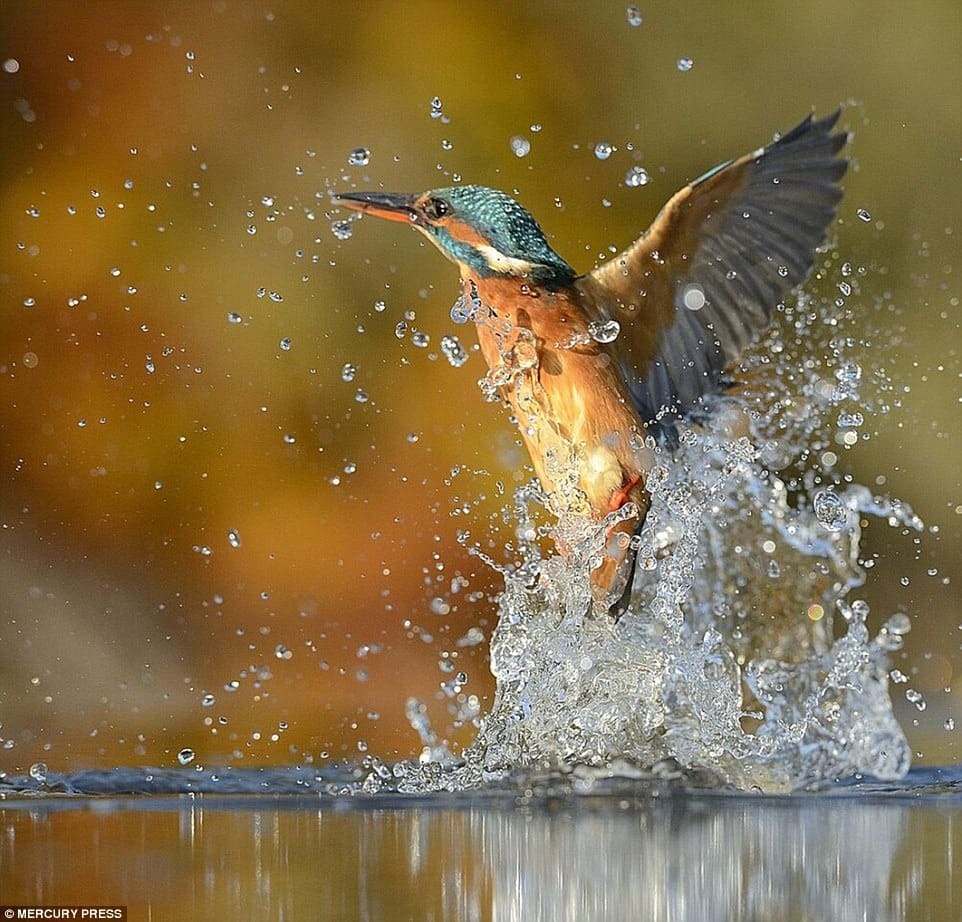 Image source: Alan McFadyen
Image source: Alan McFadyen
Mr. McFadyen would spend about seven hours every day sitting in a photography hide that he constructed himself, in his quest to capture the elusive shot.
 Image source: Alan McFadyen
Image source: Alan McFadyen
The 46-year-old photographer describes the kingfishers’ diving speed into the water as fast as a bullet.
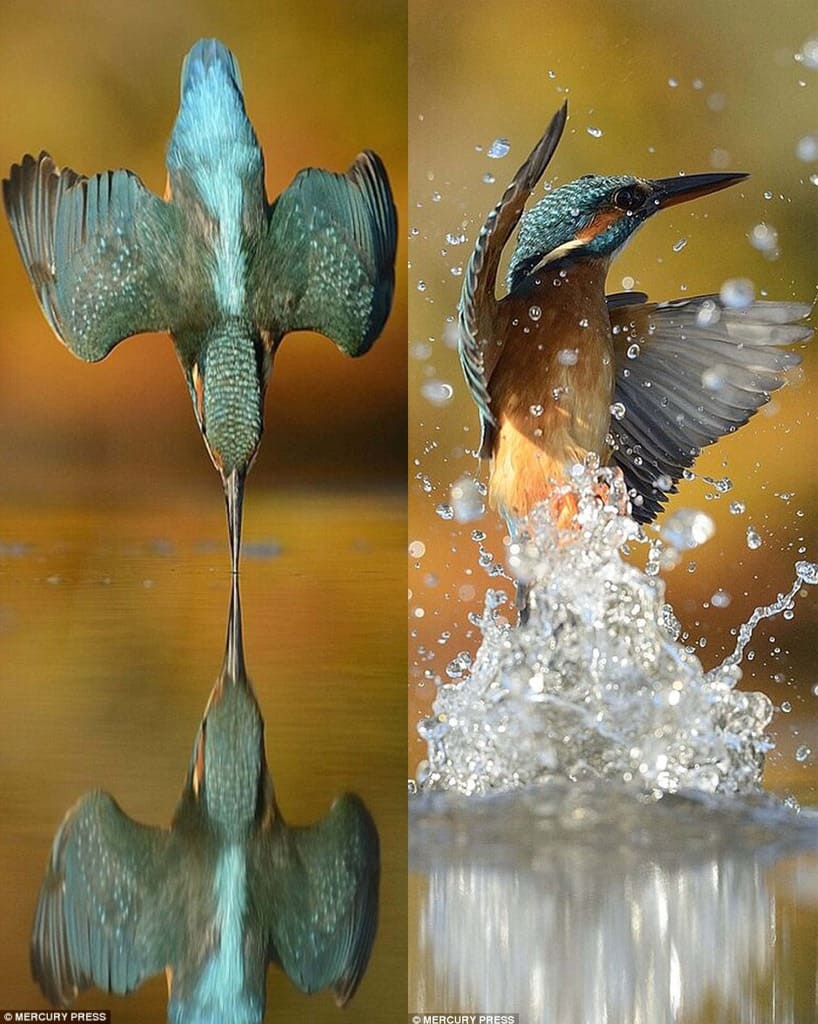 Image source: Alan McFadyen
Image source: Alan McFadyen
Before creating a new home for them, Mr. McFadyen noticed that 70 percent of the kingfishers would either perish from flooding or struggle with diving.
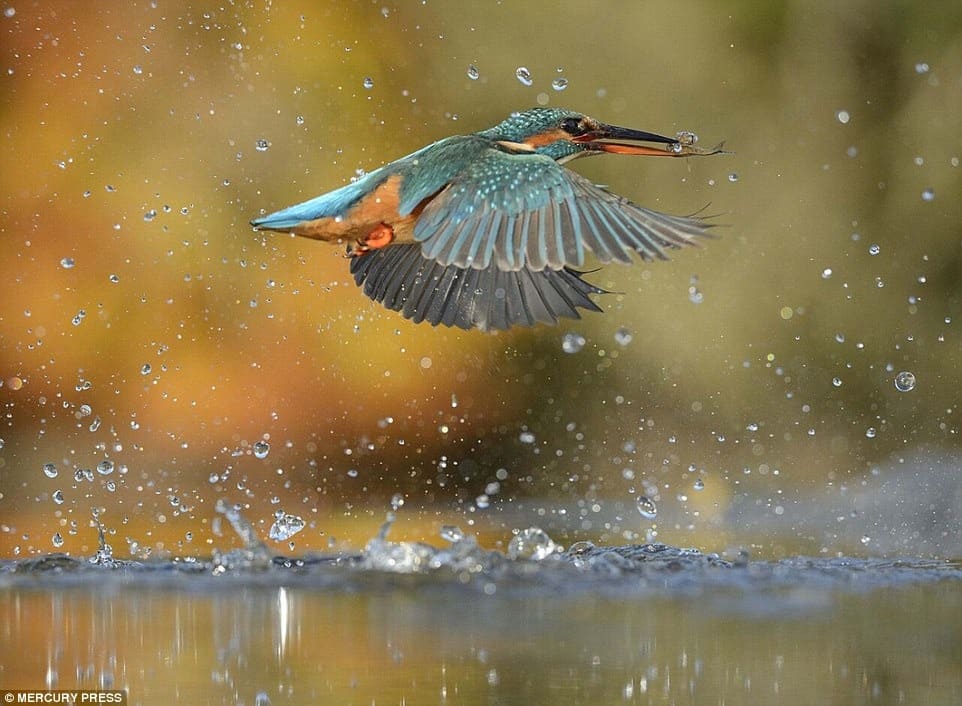 Image source: Alan McFadyen
Image source: Alan McFadyen
According to Mr. McFadyen, female kingfishers would sit on a perch about four feet above the water and would only dive three or four times a day.
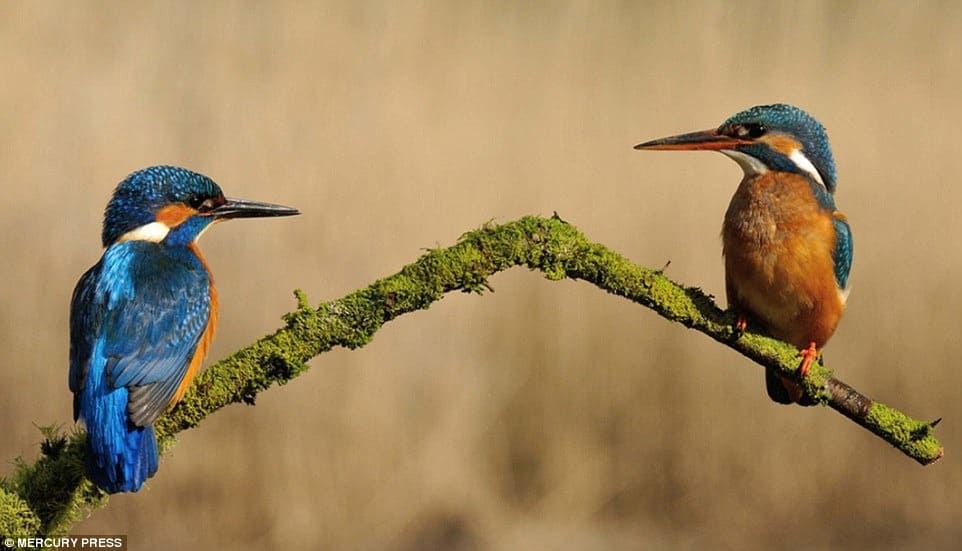 Image source: Alan McFadyen
Image source: Alan McFadyen
Even though he achieved the “perfect” shot, Mr. McFadyen stated that he has no intention of quitting photographing kingfishers at the lake.
 Image source: Alan McFadyen
Image source: Alan McFadyen
More info: photographyhides.co.uk | Facebook | Twitter
ANIMALS
Amazing Video of Unseen Ocean Creatures in the Ningaloo Canyons

The Schmidt Ocean Institute recently explored the Ningaloo Canyons on the western coast of Australia using a robotic underwater vehicle called the ROV Sebastian. Check out the amazing video of what they discovered in the deep parts of the Indian Ocean.
More info: Youtube
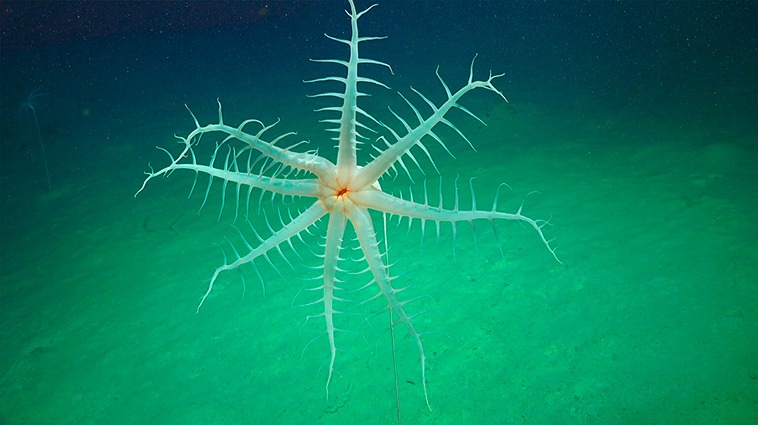
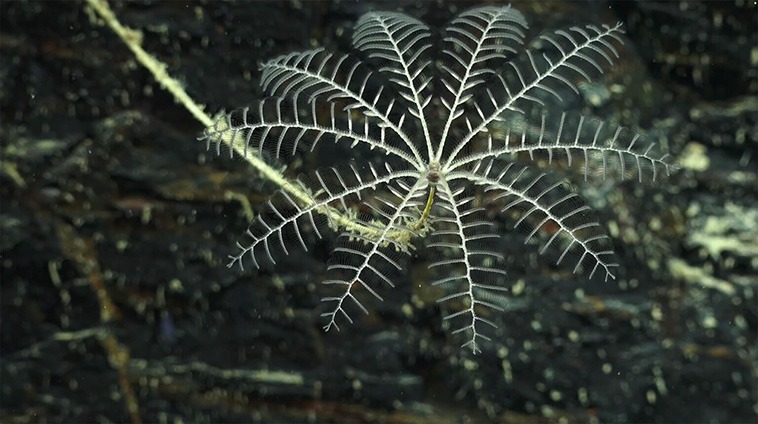


ANIMALS
These Pics Are Art and the Artists Are Insects

Flying insects move so quickly that they are hard to follow, but new technology and some smart ideas have helped Spanish photographer Xavi Bou do just that. After spending 10 years focusing on birds in flight for his Ornithographies project, he turned his attention to insects.
For Entomographies, he uses high-speed video footage taken by Adrian Smith, an insect expert at North Carolina State University, to study and record how insects move. Bou then picks multiple frames and combines them into single images that show the fast movements of one or more insects through space and time.
With Smith’s help, Bou has captured the aerial tricks of wasps, the jumps of leafhoppers, and the fluttering of butterflies in amazing detail. He hopes that by doing this, he can make people more aware of the decline in important insect populations around the world.
1. Zebra longwing
This butterfly, which is common in many areas of the Americas, really fits its name. It can fly very high with just a few flaps of its large wings.
 Image source: nationalgeographic
Image source: nationalgeographic
2. Two-lined spittlebug
This insect, which comes from the eastern United States, is often seen as a pest because it likes to eat grass. Its springy back legs can make it jump into the air like a rocket.
 Image source: nationalgeographic
Image source: nationalgeographic
3. Yellow-collared scape moth
Unlike most moths, this North American species flies during the day. Its shiny blue-black wings sparkle in the sunlight.
 Image source: nationalgeographic
Image source: nationalgeographic
4. Ailanthus webworm moths
These tropical moths have spread farther north in the U.S. Because of their larval host, the invasive tree of heaven, they are now one of the most common backyard moths in the country.
 Image source: nationalgeographic
Image source: nationalgeographic
5. Common stonefly
Mostly found in eastern North America, this insect starts its life as an underwater nymph in forested streams or rivers. Then it leaves the water, sheds its skin, and becomes an adult with wings.
 Image source: nationalgeographic
Image source: nationalgeographic
6. Green lacewings
Eighty-seven species of this insect have been found in the U.S. and Canada. Since they eat a lot of unwanted plant pests like aphids and mites, they are often used to naturally control these pests.
 Image source: nationalgeographic
Image source: nationalgeographic
7. Grapevine beetle
This insect, fittingly named, eats the leaves and fruit of grapevines, both wild and farmed, but it doesn’t do much damage to the plants. As a type of scarab beetle, it often flies in a curved path.
 Image source: nationalgeographic
Image source: nationalgeographic
8. Oak treehopper and green treehopper
Treehoppers are known for their uniquely shaped pronotum, the part behind their head, which often looks like plant parts to hide from predators. They can jump well thanks to special muscles.
 Image source: nationalgeographic
Image source: nationalgeographic
9. Banded orange
This brightly colored butterfly can be found from Mexico to Brazil. Before mating season, male butterflies look for mineral salts, sometimes even drinking salty fluids from the skin, eyes, and nostrils of other animals.
 Image source: nationalgeographic
Image source: nationalgeographic
10. Sapho longwing
Longwings can live for 6 to 7 months, longer than most butterflies. This type, found from Mexico to Ecuador, has shiny blue wings, which is why it’s also called the Sapphire longwing.
 Image source: nationalgeographic
Image source: nationalgeographic
ANIMALS
Eagle and Fox in an Epic Midair Battle Over a Rabbit, Were Captured by a Photographer

Wildlife photography often depends on the perfect combination of good timing and the right place.
That’s exactly what happened when Kevin Ebi, an experienced wildlife photographer, captured an incredible battle between a bald eagle and a red fox, both competing for a rabbit meal.
In a detailed blog post, Ebi shares the fascinating series of events that unfolded while he was photographing foxes in San Juan Island National Historical Park, located in Washington state.
Ebi noticed a lively group of eight fox kits as they began their hunting lessons. Suddenly, they spotted a rabbit, and a thrilling chase ensued. Eventually, one of the foxes emerged as the winner, proudly carrying the rabbit across the field.
 Image source: Kevin Ebi
Image source: Kevin Ebi
Ebi shares what happened at that moment: “As I followed the fox with my camera, a sudden bald eagle cry caught my attention. It was swiftly approaching, clearly aiming for the rabbit. I quickly focused on the fox, anticipating a quick turnover of events.”
To Ebi’s astonishment, instead of a quick surrender, the situation turned into a intense fight in the air.
The eagle used its power to lift the fox and rabbit high up in the sky. Even while airborne, the fox attempted to break free by swinging back and forth.
 Image source: Kevin Ebi
Image source: Kevin Ebi
 Image source: Kevin Ebi
Image source: Kevin Ebi
 Image source: Kevin Ebi
Image source: Kevin Ebi
In the end, the eagle moved the rabbit to its other claw, causing the fox to let go. The intense battle came to an end in less than 10 seconds.
 Image source: Kevin Ebi
Image source: Kevin Ebi
For those worried about the fox’s well-being after the fight, Ebi reassures that it was not injured. The fox swiftly bounced back from the encounter and resumed its playful behavior with the other young foxes, showing no visible wounds from the aerial clash.
 Image source: Kevin Ebi
Image source: Kevin Ebi
 Image source: Kevin Ebi
Image source: Kevin Ebi
 Image source: Kevin Ebi
Image source: Kevin Ebi
 Image source: Kevin Ebi
Image source: Kevin Ebi
-

 GARDEN10 tháng ago
GARDEN10 tháng ago15 Houseplants That Grow Well in Vases with Water
-

 FUNNY1 năm ago
FUNNY1 năm ago20 Funny Grammar Fails That Will Make You Laugh All Day
-

 GARDEN1 năm ago
GARDEN1 năm ago4 Easiest Ways to Get Free Plants
-

 GARDEN11 tháng ago
GARDEN11 tháng ago30 Shimmering Side Yard Landscape Ideas
-

 FUNNY1 năm ago
FUNNY1 năm ago30 Funny and Perplexing Photos That Make You Laugh All Day
-

 FUNNY1 năm ago
FUNNY1 năm ago30 Weirdest Things That People Came Across On The Subway
-

 ANIMALS1 năm ago
ANIMALS1 năm agoBritish Angler Caught Huge 67-Pound Goldfish in the World
-

 ANIMALS1 năm ago
ANIMALS1 năm agoMore Than 3 Million People Baffled by Video of Strange Figure on the Beach

